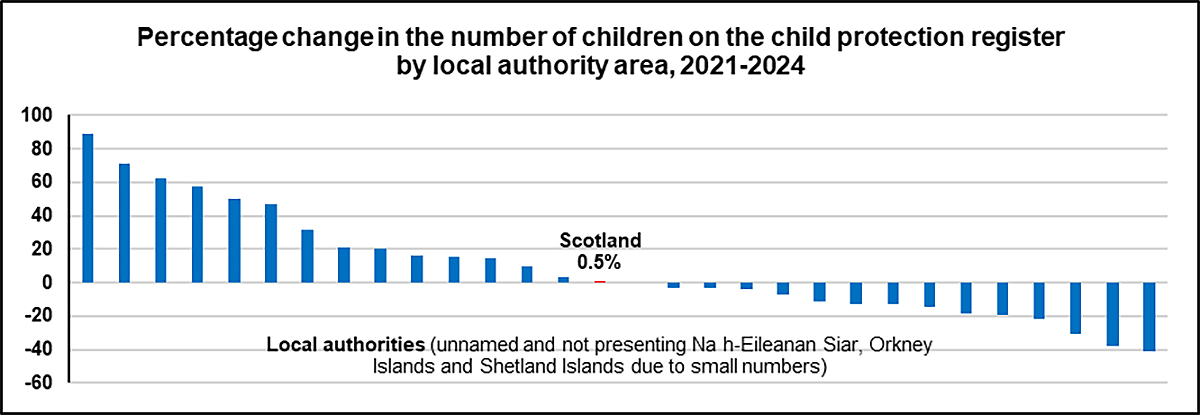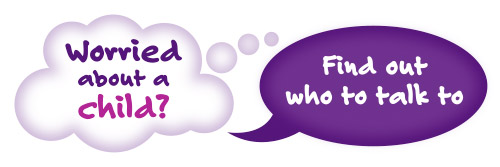New indicators and new insights. What do the latest child protection statistics tell us?


What’s new? What’s changed? What are we not seeing? These are the types of questions many of us are likely to ask when looking at newly published annual statistics, and these questions really lend themselves to considering the 2023-2024 Child Protection Statistics (published 25 March 2025). This year’s set of statistics includes new indicators, including information on earlier stages in the child protection process, while it also provides us with new data to better understand what has changed or stayed the same since the start of the COVID-19 pandemic and the associated public health restrictions. Understanding the data is essential if we are to prevent harm and respond effectively to the needs of all our children and young people who may have experienced, or be at risk of, any harm, neglect or abuse in their young lives.
So, what is new?
Having data on where children on the Child Protection Register live according to the Scottish Index of Multiple Deprivation is a very welcome new development. We know from work led by Professor Paul Bywaters and others that children’s chances of being supported by child protection services are related to family socio-economic circumstances and neighbourhood deprivation. This year’s data helps to further evidence this in Scotland. 48% of the children registered on the Child Protection Register in 2023-2024 lived in Scotland’s 20% most deprived areas. However, the data also continues to remind us all that children can be at risk of harm and abuse wherever they live, with 12% of children registered living in Scotland’s 40% least deprived areas.
Having new data on inter-agency referral discussions (IRDs), which involve social work, police and health practitioners coming together in response to a child protection concern, assess levels of risk, and consider what support or action is needed, is also important. With the welfare of 17,901 children considered at IRD in 2023-2024, we gain a better understanding of the number of children identified as being at risk of, or who have experienced, harm and abuse in Scotland, as well as the volume of risks and concerns the child protection workforce is responding to.
Also new is data on the number and needs of children aged 12-17 who are considered by Care and Risk Management (CARM) processes. These are applied when a child aged 12-17 has been involved in behaviours which could cause serious harm to others. We have learned that 121 children aged 12-17 were referred to CARM processes in 2023-2024, and the main concerns recorded were violence (51% of children), substance use (28%), harmful sexual behaviour (27%) and unauthorised absences (27%). Alongside child protection registration and Children’s Reporter data, the CARM process data can help us to build a better understanding of the support needs of our adolescents.
What has changed?
When assessing change, we have to consider the most appropriate time period to focus on. When I wrote about the figures last year, the change before and after living through the pandemic public health restrictions was the focus, but this year’s data allows us to consider what has changed in the ‘post-pandemic’ years.
Looking at the data from 2020-2021 to 2023-2024, the headline figures would suggest there has been relatively little change. For example, the 2,129 figure for children on the Child Protection Register on 31 July 2024 is in line with numbers from the previous three years; domestic abuse, neglect, parental substance use, parent mental ill health, and emotional abuse remain the main concerns leading to child protection registration; and parents are the primary known or suspected perpetrator of harm and abuse for 80% of children registered. However, a small but potentially significant change is the number of 16–17-year-olds on the Child Protection Register. There were 43 children aged 16-17 registered on 31 July 2024, which is more than double the average number (18 children) over the 10 years prior. Could this increase show an impact from the National Guidance for Child Protection 2021 being implemented and its aim to strengthen how 16–17-year-olds should be supported through child protection processes?
While the headline data might suggest there has been relatively little change over the last three years, we must not forget the ‘busy-ness’ of child protection services and the workforce responding to the needs and risks of children. The 17,901 children discussed at IRD, and the number of children being placed on and coming off the child protection register across the year, evidence this. With 3,167 children registered in 2023-2024 (79% of whom were registered for the first time) and 3,177 children leaving the register, the annual number of children on the child protection register is much higher than the snapshot number of 2,129 children on 31 July 2024.
A relative lack of change at the national level can also hide changes across different parts of the country. Between 31 July 2021 and 31 July 2024, the number of children on the Child Protection Register in Scotland hardly changed (an increase of 10 children or 0.5%). However, this chart shows that the national figure can belie what is happening for individual children and local areas: half of Scotland’s local authorities experienced an increase (indeed, five had an increase of 50% or more) and half experienced a decrease. It is important that local trends are understood, explained and responded to, and the Minimum Dataset for Child Protection Committees can support this by assisting local partners to analyse their local, quarterly data.

What are we not seeing?
The ever-changing needs and demands on child protection services and the number of children, families and practitioners involved over the course of the year are challenging for an annual, national statistical collection to evidence. Indeed, with the collection primarily focusing on the children on the Child Protection Register, the data only provides limited insight into the number of children who are at risk of, or have experienced, harm and abuse. This is particularly the case for children experiencing child sexual exploitation, child criminal exploitation, online harm and other emerging concerns. We need data from other sources to better understand the extent and impact of these harms on our children and young people.
That said, we should also consider where there is the potential to improve the data that the annual Child Protection Statistics collects. The number of disabled children involved in child protection processes is a prime example. 5.5% of the 2,129 children on the Child Protection Register on 31 July 2024 were recorded as disabled. Given their increased risk of experiencing harm and abuse (Jones et al., 2012; Sullivan and Knutson, 2000), this would appear to be an under-recording of the number of disabled children and reinforces the value of the disability data work underway with Scottish Child Interview Model partnerships.
So, while the introduction of the new indicators in the Scottish Government’s Child Protection Statistics is very welcome, this annual publication alone does not meet all our data needs in order to better inform our responses to the harm children are experiencing and the support they require. To continue to build our collective understanding of the number, needs and experiences of children for whom there is a care and protection concern, we all – social work, police, health, education, the third sector and researchers – must continue our review of the data we collect and share the insights these provide.
The views expressed in this blog post are those of the author and may not represent the views or opinions of our funders.
Commenting on the blog posts: sharing comments and perspectives prompted by the posts on this blog are welcome.
CELCIS operates a moderation process so your comment will not go live straight away.


